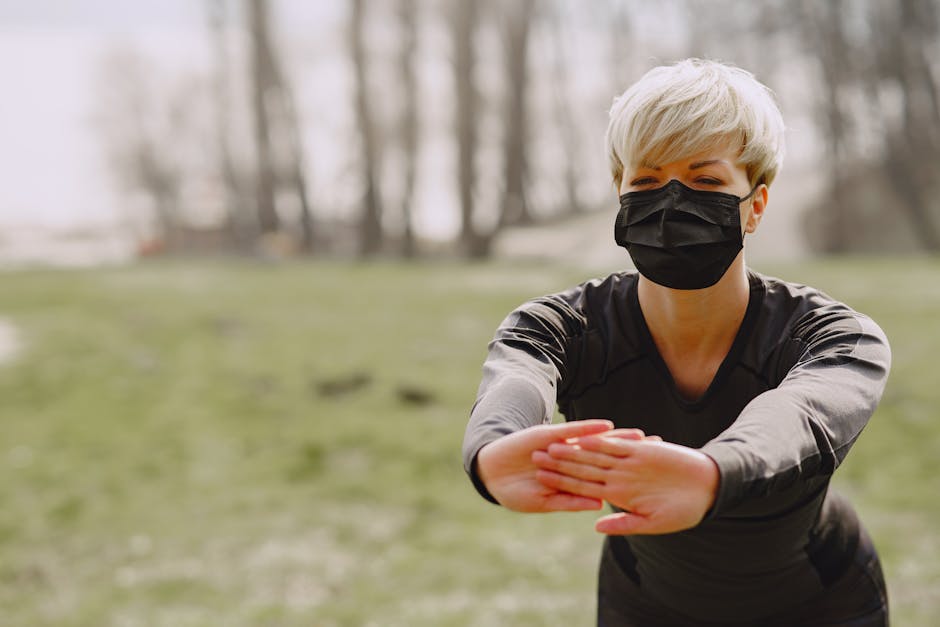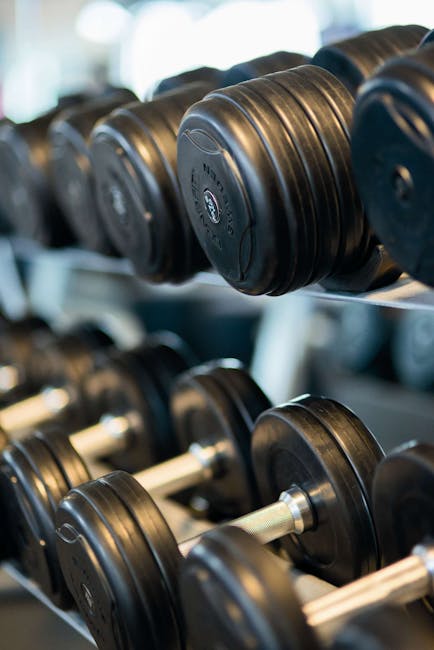Welcome to the wonderful world of strength training with a hernia! You know what they say: no pain, no gain. And boy, will you feel the gain when your hernia pops out like a jack-in-the-box during your deadlifts. But fear not, my fellow fitness enthusiasts, for there are ways to lift those heavy weights safely without having to worry about a protruding bulge ruining your gains. In this article, we will explore some creative and humorous ways to successfully navigate the world of strength training with a hernia. So grab your weightlifting belt and let’s get started!
Contents
- 1 Strength Training Safely with Hernia: Tips and Precautions
- 2 Understanding Hernia and Its Impact on Strength Training
- 3 Preparing for Strength Training with a Hernia: What to Know
- 4 Safe Exercises for Hernia Patients: Building Strength Without Risk
- 5 Managing and Preventing Hernia During Strength Training: Expert Advice
Strength Training Safely with Hernia: Tips and Precautions
So, you’ve got a hernia, and you’re worried about participating in strength training? Fear not, my friend! With a few tips and precautions in place, you can still pump iron without causing further harm or discomfort to your body. Here are some helpful pointers to get you started:
- Consult with your doctor: This may seem like a no-brainer, but it’s important to get the okay from your doctor before embarking on any new fitness regime. They may have specific recommendations or suggestions for exercises that will be safe for you to do.
- Avoid or modify certain exercises: There are certain strength-training exercises that are more likely to aggravate a hernia. These include sit-ups, crunches, squats, and deadlifts. Modify these exercises by either reducing the weight, avoiding them altogether, or finding alternative exercises that work the same muscle groups.
- Wear a supportive garment: A hernia support garment can help to keep your hernia from bulging out during exercise. It may also help to reduce pain and discomfort in the area. Talk to your doctor or a specialist about the best type of garment for your needs.
Remember, safety first when it comes to strength training with a hernia. Listen to your body, don’t push yourself too hard, and modify exercises as needed. Before you know it, you’ll be back to pumping iron like a pro!

Understanding Hernia and Its Impact on Strength Training
Before you start lifting those heavy weights at the gym, it’s important to understand what hernia is and how it affects your strength training. A hernia occurs when an organ or tissue protrudes through a weak spot in the muscle, causing pain and discomfort. And let’s be honest, nobody wants to experience that kind of agony when they’re trying to crush their personal best.
Some common signs of hernia include a bulge in the affected area, pain when lifting heavy weights or performing intense physical activity, and a feeling of heaviness or pressure in the groin area. If you’re experiencing any of these symptoms, it’s best to take a break from your strength training routine and seek medical attention.
Although hernia can put a bit of a damper on your gains, there are ways to work around it. One option is to focus on exercises that strengthen the core muscles without putting too much strain on the affected area. Planks, pelvic floor exercises, and yoga are all great options. And remember, slow and steady wins the race. Don’t push yourself too hard too fast, and always listen to your body.
- Tip #1: Take breaks when you need to. Pushing through the pain isn’t worth it.
- Tip #2: Stretch before and after your workout to prevent further injury.
- Tip #3: Invest in a good support garment to keep everything in place.
Preparing for Strength Training with a Hernia: What to Know
So you’ve got a hernia, but you’re not willing to let that stop you from crushing it at the gym? Good for you! But you’ll want to make sure you do it safely. Here’s what you need to know before preparing for strength training with a hernia:
– First and foremost, consult with your doctor. They’ll likely have specific recommendations for what exercises to avoid and when it’s safe to start lifting weights again.
– Start slow and listen to your body. If you’re feeling pain or discomfort, back off and try a different exercise.
– Focus on strengthening your core. A strong core can help support your hernia and prevent it from getting worse. Try exercises like planks, bird dogs, and seated leg raises.
And here are a few things to keep in mind while you’re working out:
– Wearing a supportive hernia belt can help keep your hernia from getting worse during exercise. Just make sure it fits properly and isn’t too tight.
– Avoid exercises that put too much pressure on your abdomen, like crunches or sit-ups. Instead, opt for exercises that work your core without strain, like pelvic tilts or leg lifts.
– Finally, don’t be afraid to take it easy if you need to. There’s no shame in modifying your workout or taking breaks when you need them. Your health is more important than your gym gains, after all.
Safe Exercises for Hernia Patients: Building Strength Without Risk
How to Build Strength Without Risking a Hernia
If you’ve recently undergone hernia surgery or have been diagnosed with a hernia, it’s important to maintain physical activity to help keep your body strong and healthy. However, certain exercises can put you at risk of re-injuring yourself or causing further damage. Here are some safe exercises to try:
- Walking: It may not be the most exciting exercise, but walking is one of the best things you can do post-hernia. It’s low-impact, easy on your body, and helps build endurance over time. Just make sure to wear comfortable shoes and avoid hills or uneven surfaces.
- Yoga: While certain yoga poses can aggravate a hernia, others can actually help strengthen your core muscles and alleviate pain. Stick to gentle poses that don’t put pressure on your abdomen, such as cat-cow, child’s pose, and bridge pose.
- Swimming: If you’re itching to get back into the water, swimming is a great full-body workout that’s safe for most hernia patients. Just avoid the breaststroke, which can put pressure on your abdominal muscles, and take it slow if you’re still recovering from surgery.
Ultimately, the key to exercising with a hernia is to listen to your body and avoid anything that causes pain or discomfort. Don’t push yourself too hard too soon, and always check with your doctor before starting a new exercise routine. With a little care and patience, you can build strength without risking further injury.
Managing and Preventing Hernia During Strength Training: Expert Advice
One of the main reasons people suffer from a hernia during strength training is because they don’t warm up properly. Before you hit the weights, be sure to do some dynamic stretches to get your body ready for the workout. Here are some movements to get you started:
- Arm Circles: Stand with your feet shoulder-width apart and your arms out to your sides. Slowly circle your arms forwards, then backwards, making larger and larger circles with each pass. This will help loosen up your shoulder joints and warm up your chest and back muscles.
- High Knees: Stand in place and lift one knee up as high as you can, then quickly switch and lift the other knee. Keep your core engaged and try to avoid arching your lower back.
- Butt Kicks: Stand in place and kick one heel back towards your glute, then quickly switch and kick the other heel. This will help activate your hamstrings and glutes, which are essential for many exercises.
If you’re worried about getting a hernia during your strength training routine, there are a few things you can do to prevent it. Here are some tips from the experts:
- Start slow: If you’re new to strength training, start with light weights and gradually increase the intensity over time. Don’t try to lift heavy weights right off the bat, as this can put too much strain on your body.
- Focus on form: Make sure you’re using proper form when performing exercises to avoid putting stress on your muscles and tendons. If you’re not sure how to do an exercise correctly, ask a trainer or watch tutorial videos online.
- Listen to your body: If you feel pain or discomfort during a workout, stop and rest. Ignoring these warning signs can lead to more serious injuries.
Remember, strength training is a great way to build muscle and improve your overall health, but it’s important to do it safely. By following these tips and warming up properly, you can reduce the risk of hernias and other injuries and keep your body strong and healthy.
Farewell to the Herniated Hassle!
Congratulations! You’ve made it to the end of the article about strength training with a hernia. And if you’re still reading this, it means you’re already one step ahead of the game. You’ve shown the world (and your hernia) that you’re a warrior and that you don’t take “I can’t” for an answer.
But before you go, here’s a final word of advice for you: always listen to your body. If you feel any discomfort or pain, stop immediately and seek medical attention. Don’t be a stubborn mule who wants to prove something to the world. Remember, no one can mess with your health except you!
So go out there, fellow gym enthusiast, and show your hernia who’s the boss. With determination, caution, and a funky playlist, you can achieve anything you set your mind (and muscles) to.
Stay strong and hernia-free!








Leave A Comment